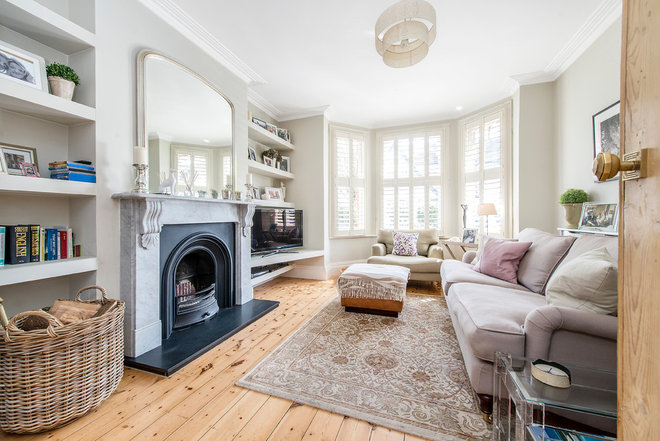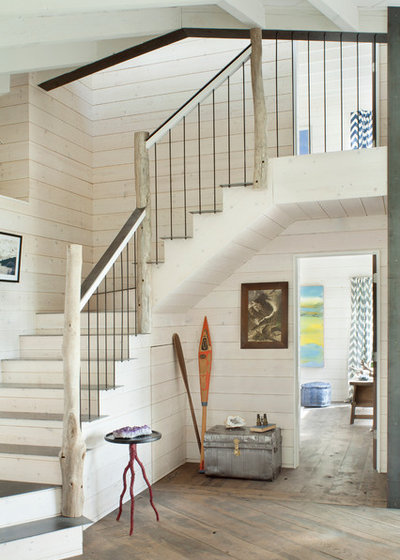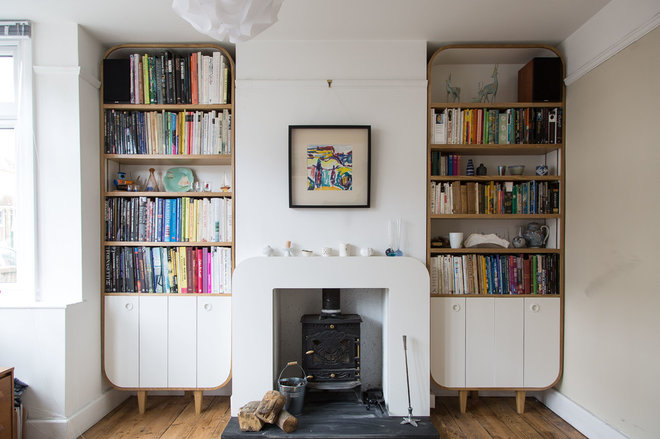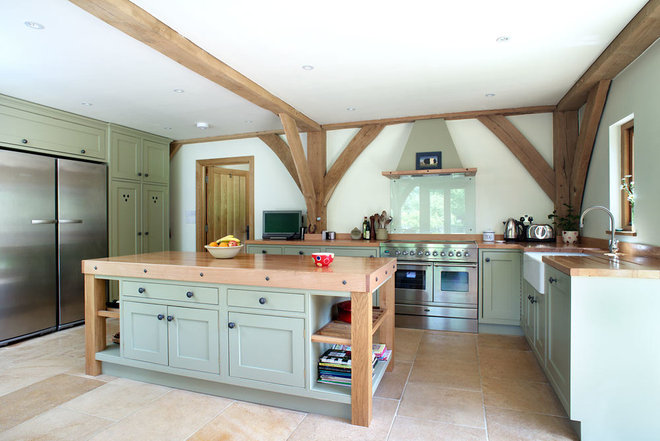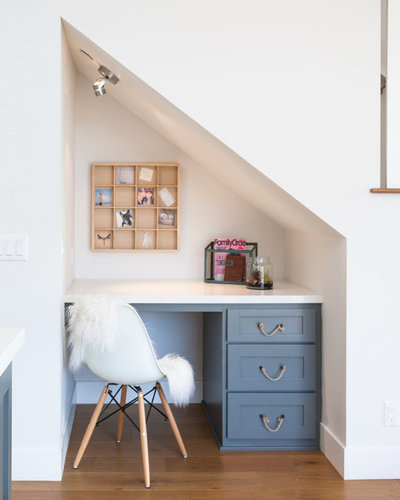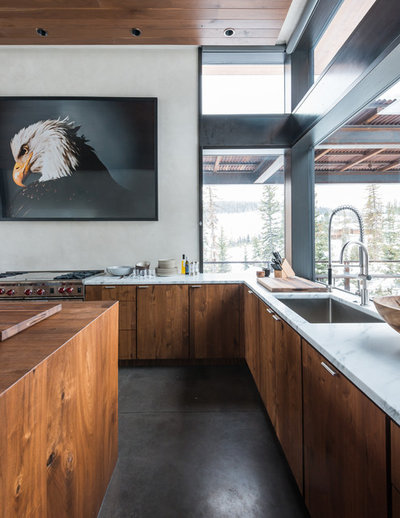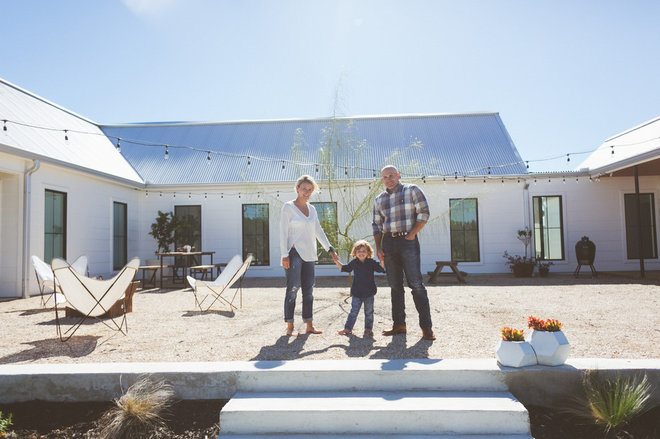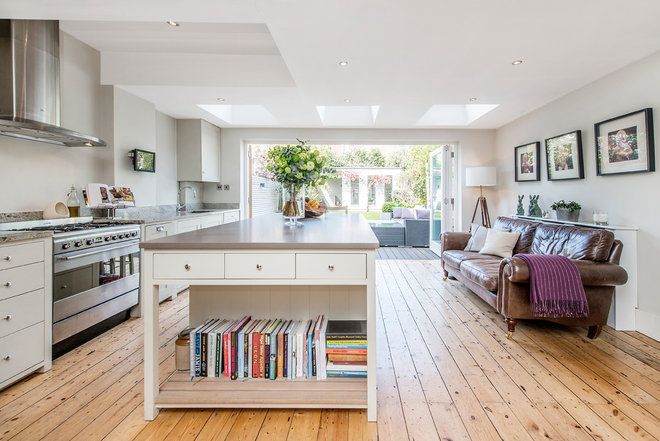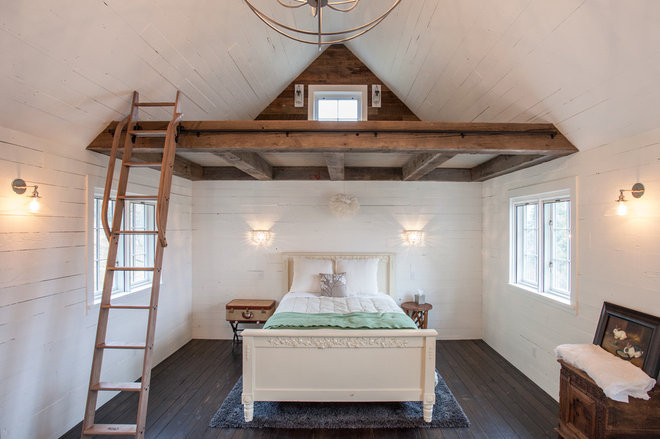How to Remodel Your Relationship While Remodeling Your Home
A recent Houzz survey of homeowners in 10 countries — Australia, Canada, France, Germany, Italy, Russia, Spain, Sweden, United Kingdom and United States — offers insight into the many perils and pitfalls couples face during building, remodeling and decorating projects, and the tips and tricks to help solve those challenges and relieve stress. “Insist on what you want, but know that sometimes close to what you want is just as good,” said one anonymous commenter from the United States.
Remodeling is like a crash course in the viability of a relationship. You find out what you and your partner are made of. Large sums of money are involved, plus ego, personal preferences, childhood dreams, high stress, forced collaboration — the list goes on. “I think remodeling is in some way a litmus test for what your current relationship is and what it could be,” says Peter Pearson, who, along with his wife, Ellyn Bader, founded The Couples Institute in the early 1980s. Since then they’ve been counseling couples and training therapists to do the same.
Pearson says remodeling — or tackling any major undertaking as a couple — brings up dilemmas that are blind to geographic location, ethnicity and culture. “It’s just proof of the universality of the emotional brain,” he says. “What gets involved in all these discussions — that’s universal human nature regardless of where you grow up.”
Most couples found the process of renovating, decorating or building a new home fun and fulfilling, but also frustrating and difficult, according to the survey, which was conducted online with about 5,800 Houzz users among the 10 countries. In Australia and Spain, homeowners tended to describe the process as frustrating and difficult. In Sweden, an overwhelming majority said the experience was fun.
“Put the issue away for a bit. Zip the lip,” offered one Canadian commenter as a way to cope through remodeling challenges. Homeowners in every country reported clashing with their significant other while deciding on style, design, products, materials and finishes for their project.
Communicating with each other was another challenge. “Most people get in arguments or get hurt when they feel like they’re not being understood,” says Dawn Michael, a couples therapist and clinical sexologist who used to teach classes to couples on how to navigate through a remodeling project. “That is the biggest challenge in relationships and can equate to design too.”
The best way to resolve an issue? Compromise topped the list. But so did looking at photos on Houzz. (No, really.) Michael suggests it to her clients too. She says sitting down together as a couple and going through pictures helps each person understand what the other likes and helps them come to clear conclusions on style and design choices that can prevent disagreements later on.
How to Create and Use Ideabooks
“Sometimes people realize that maybe they kind of like the same thing, but they go about explaining it in a way that puts the other person on the defensive, or sometimes men and women simply speak different languages,” she says. “So writing it down and really looking at it, you might go, ‘Wait, I’m OK with having a sectional. I just wanted enough seating.’”
The most common challenge couples face while in the thick of a renovation project is staying calm and composed.
“Long hours of work was exhausting, and we had to juggle family life around that,” an Australian commenter said.
Another big challenge is being flexible about living conditions. For example, if you’re staying in your home during a kitchen remodel, you may need to get used to making your coffee on a fold-out table in your garage, doing dishes in a bathtub or eating lots of takeout food. Some people are better at reverting to their college dorm room days than others.
“Not sure my husband understood how difficult it is for a woman to live without anywhere to get dressed, shower, do your hair etc.,” an Australian commenter said. “We also had some low points where we had no kitchen or bathroom, which wasn’t particularly conducive to a happy life.”
Differences in project management style between individuals is another pain point. One person may not mind the mess; the other can’t stand it. Or one is perfectly fine moving along at a leisurely pace, while the other just wants the project finished five minutes ago. A professional can help take the reins on project management, but no matter what, if you’re taking on a big project, you’ll have to be on top of how things are running.
Pearson, the couples therapist, says that when he and his wife worked together on an addition to their house, they made two decisions that he says prevented 99 percent of all possible disagreements.
The first was that they decided what the budget was going to be. According to the survey, this was one of the top tips given by respondents for other couples as well. Figure out what you can afford, agree on it and stick with it. If something comes up during the project that calls for a change in the budget, discuss it with your significant other before making a decision.
The second was that Pearson and Bader divided up the decision-making process so that Bader got 51 percent of the voting power and Pearson got 49 percent. In other words, he had input and Bader sought his opinion on things, but in the end, she had the final say because they had decided early on that she would be better suited for spearheading the project.
This 51-49 split can cover all areas of the remodel or be divided up between tasks. For example, one person may take on the selection of materials and finishes, while the other is more comfortable with project management.
The budget, though, should always be a 50-50 decision, arrived at mutually, Pearson says. The person with 51 percent of the voting power is allowed to do anything within the budget. “They can spend three times what they thought they would spend on faucets or shower heads, but they have to agree to stay within the overall budget,” Pearson says. “And the person with 49 percent of the voting can’t go out and buy things without getting the go-ahead from their partner. It’s kind of like having a chairman of the board.”
You and your partner need to make a lot of decisions together, hundreds of decisions. Once a discussion comes up, that’s when negotiations begin. You and your partner are negotiating on what the solution or decision should be. And Pearson says it’s important for each person to have the right negotiating skills.
“Most couples start off by defining the problem. And that’s not very good. I would say I have a higher tolerance for visual disarray than [wife] Ellyn. But she would say I’m a slob,” he says, jokingly.
But he’s quick to point out how this can sound much easier said than done. “This is just the structure that helps couples,” he says. “If it degenerates into a little mud slinging — ‘You’re just like your momma!’ — then at that point, you need something else.” Seeking the advice of a couples counselor isn’t a bad idea.
Despite disagreements and challenges, the majority of homeowners in every country surveyed had the same top three thoughts about their relationship during the remodel: “We make a great team,” “I’m glad I’m with this person” and “If we can make it through this, we can make it through anything.” The latter is particularly important.
While remodeling is challenging, it can strengthen relationships. Many people reported that after completing a remodeling project, they now spend more time at home together, eat and cook more at home, and have more company over. A large majority of people in many countries also said they feel more comfortable, happier and more organized at home.
And an overwhelming majority said the result of the project was worth going through the experience. In Spain and Sweden, 100 percent of respondents said it was worth it, despite the challenges. “Every time you go into a room that you remodeled together, it reminds you of the success of the project, which relates to the success of the relationship,” Michael says.
Brandi Hines has built three new homes with her husband, Jamie (they are seen here with their son, Parker), and acted as general contractor during all the projects. With two full-time jobs and a 2-year-old, the stress level was to the max, she says. Talking through the problems together helped them cope, as did walking away from the project for a bit, getting outside, clearing brush on their property and just visualizing the overall goal of having a beautiful home. “That really helps put it into perspective why you’re doing this to begin with,” she says. And when that doesn’t work? “Wine,” she says.
While she says she realized how much she and her husband make a great team, it wasn’t easy. “It’s hard, and it will test your marriage and how well you work together,” she says.
When you have a lot invested in something — time, money, hopes and dreams — it can turn into a high-stress situation. If you’ve ever planned your or your child’s wedding, obsessed over the perfect birth plan or thought you had that far-away vacation worked out to the last detail only to have everything blow up in your face, then you might have some understanding of what a remodeling project can entail.
You’ll need a few tricks to help manage the inevitable stress. Many people found that venting to each other or to friends and family was a huge relief, according to the survey. Getting out of the house and taking alone time also were important in all countries. Hugging, kissing and being affectionate was the top way to manage stress in France and Germany, and was high on the list in Canada, Italy, Russia, Spain and the United Kingdom.
Being a clinical sexologist, Michael has a suggestion of her own. “I think people should have lots of sex,” she says. “Definitely don’t be distant intimately. That’s a sure way of getting in an argument. Make the time to be excited about the project — and bring it into the bedroom.”

